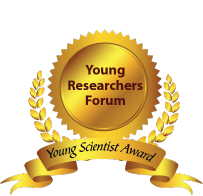Call for Abstract
Scientific Program
24th Annual Meeting on Arrhythmia and Cardiac Surgery, will be organized around the theme “Arrhythmia and Cardiac surgery- To get raise of Heart Disease”
Arrhythmias 2017 is comprised of keynote and speakers sessions on latest cutting edge research designed to offer comprehensive global discussions that address current issues in Arrhythmias 2017
Submit your abstract to any of the mentioned tracks.
Register now for the conference by choosing an appropriate package suitable to you.
Cardiovascular disease generally refers to conditions that involve narrowed or blocked blood vessels that can lead to a heart attack, chest pain (angina) or stroke. Other heart conditions, such as those that affect your heart's muscle, valves or rhythm, also are considered forms of heart disease. Cardiology division and cardiology labs continue to improve patient health through various scientific innovation. It includes various subtopics such as premature atrial contractions, premature ventricular contractions, atrial fibrillation, multifocal atrial tachycardia, Non-reentrant arrhythmia, re-entrant arrhythmia, brady arrhythmia, and wolff-parkinson-white syndrome. Out of this Wolff–Parkinson–White syndrome (WPW) is one of the disorder of electrical system of the heart which are commonly referred to as pre-excitation syndromes which is caused by the presence of an abnormal accessory electrical conduction pathways between the atria and ventricles.
Cardiac surgery is the field of medicine involved in surgical treatment of diseases affecting organs inside the thorax generally treatment of conditions of the heart and lungs. Coronary Bypass Surgery (CABG) is done to restore normal blood flow to heart muscle. Cardiac cognitive impairment, Cardiac valve disease, Atrial sepal defect repair, Ventricular sepal defect repair are cognitive impairment done for cardiac surgery.
Cardiac Arrhythmia means irregular heartbeats or heart rhythm where muscles of heart contract in a coordinated fashion to insure that blood is been efficiently pumped into the arteries and the extra heart beat are due to premature atrial contraction and premature ventricular contraction. Cardiology division and cardiology labs continue to improve patient health through various scientific innovation. It includes various subtopics such as premature atrial contractions, premature ventricular contractions, atrial fibrillation, multifocal atrial tachycardia, Non-reentrant arrhythmia, re-entrant arrhythmia, brady arrhythmia, and wolff-parkinson-white syndrome. Out of this Wolff–Parkinson–White syndrome (WPW) is one of the disorder of electrical system of the heart which are commonly referred to as pre-excitation syndromes which is caused by the presence of an abnormal accessory electrical conduction pathways between the atria and ventricles.
Various devices that are used in arrhythmia for diagnosis and treatment for heart diseases problems such as pacemaker is been used to control the abnormal heart rhythms. Catheter ablation is a device used for destruction of area that causes heart rhythm problem. Some other tools that are been used for cardiac arrhythmia are electrical cardioversion where an electric current is been used to reset heart's rhythm back to its regular pattern (normal sinus rhythm), whereas implantable cardioverter-defibrillator or an automated implantable cardioverter defibrillator (AICD) is the device that is implantabled inside the body, and able to perform cardioversion, defibrillation and pacing of the heart, this device is capable of correcting most life-threatening cardiac arrhythmias.
Doctor diagnosis heart disease based on the medical and family histories, the risk factors, the results from various test and procedures and a physical exam. No single test can diagnose problem. Besides blood test, cardiac sonography some other test includes echocardiogram, electropsychoics testing and software interpretation are used for the cardiac assist devices and techniques from which the doctor can know about the heart disease.
Heart rhythm and cardiac management depends on whether the affected person is stable or unstable. Treatments may include physical manoeuvres, medications, electrical conversion, electro-or cryo-cautery. In the United States, people admitted to the hospital for cardiac arrhythmia and conduction disorder with and without complications were admitted to the intensive care unit was more than half the time in 2011. Arrhythmia can be managed from various way such as SCA risk assessments, non-invasive techniques, clinical electrophysiology are some clinical techniques and epidemiology of cardiac arrhythmia.
Case report are done after the complete study of signs, symptoms and so on of individual patient and then the report is made like any premature atrial contractions and it’s diagnosis, case report for paediatric arrhythmic patients and various proactive cases in heart rhythm and cardiac surgery from which the individual will able to know about its health condition further in life.
